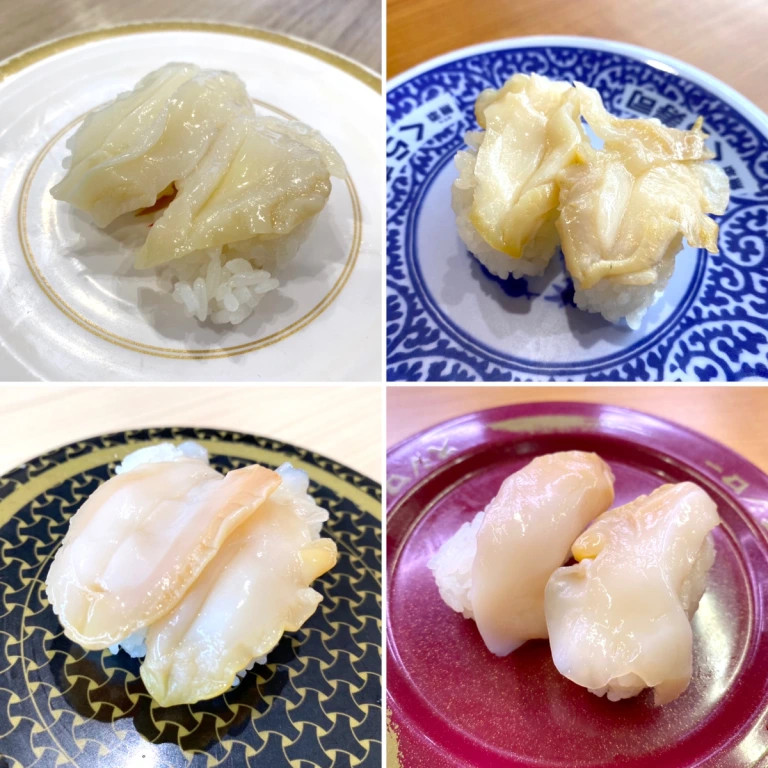
Our reporter didn’t have high hopes for this taste test…Did it surpass his expectations?
In the opinion of our Japanese-language reporter P.K. Sanjun, Japan’s four biggest conveyer belt sushi restaurants (Sushiro, Hamazushi, Kura Sushi, and Kappa Sushi) don’t have very good shellfish. To P.K., who likes shellfish so much he might have been a sea otter in a previous life, such seafood is supposed to be a luxury. But conveyor belt sushi restaurants sell things like blood clam, egg cockle, turban shell, abalone, and scallops for 300 yen (US$2.20) or less, and at that price, it’s hard for P.K. to find any that meet his personal standards.
But for the sake his quest to find the best of each kind of sushi between the big four conveyer belt chains, P.K. tried to overcome his distaste for budget-priced shellfish sushi, tasting and comparing several types between the restaurants. Ultimately though, his personal conclusion is that he’d rather pass on most of them entirely.
However, P.K. did find one reasonable and relatively edible shellfish sushi, and that was shiro tsubugai: white whelk, a type of sea snail, and so P.K. decided that it would be the representative for the “shellfish” category.
▼ Clockwise from top left: Kappa Sushi, Kura Sushi, Sushiro, and Hama Sushi
For the comparison, P.K. visited all four restaurants on the same day in a span of three hours. Performing the taste tests in such a short time ensured that he would best be able to compare the flavors of each one and accurately convey his experiences. Here’s what he thought:
● Kappa Sushi (110 yen [US$0.80])
“It’s characterized by its crisp texture, and it doesn’t really have a strong fishy smell. On the other hand, the meat is very thin, and I don’t get any of the sweetness or umami typical of shellfish. Well, considering the 110-yen price, I’d say that if texture is what’s important to you, this might be okay.”
● Kura Sushi (110 yen)
“Compared to Kappa Sushi’s, the meat is much thicker, and it has the crisp texture and umami I’m looking for. …But at the same time, its fishy smell really bothers me, so unless you’re the type of person who likes their shellfish to have a fishy smell, I really wouldn’t recommend it.”
● Hamazushi (110 yen)
“I like how it’s thick and crunchy. I also don’t really get a fishy smell from it. However, this one is pretty watery and has almost no umami or sweetness. Like Kappa Sushi’s, its emphasis is on texture.”
● Sushiro (165 yen)
“Out of the four restaurants this one is the most expensive at 165 yen. Maybe that’s because it’s a thick cut. I do get a sense of shellfish’s sweetness here. It has a really faint fishy smell, but I think it’s probably a tolerable level. Without considering the price, based purely on the sushi itself, I’d say out of the four restaurants this one is the best quality.”
Though Sushiro’s was by far the best quality, unsurprisingly for P.K., none of the conveyer belt sushi restaurants’ whelk sushi seriously impressed him. While all of the restaurants delivered on the crisp texture expected of the sea snails, he often found the flavor lacking, and even when it didn’t, the meat suffered from a fishy smell. As such, shiro tsubugai makes for a pretty hit-or-miss sushi, at least at conveyer belt sushi places, he feels.
In the end, P.K.’s general conclusion is that “There are better things than this to eat at conveyer belt sushi restaurants.” Shellfish fans with particular tastes may or may not like the four big chains’ whelk sushi, and those who don’t care for shellfish will probably order their myriad of other delicious sushi options, like prawn and saltwater eel, before they try this, so it comes down to your preferences.
Images © SoraNews24
● Want to hear about SoraNews24’s latest articles as soon as they’re published? Follow us on Facebook and Twitter!

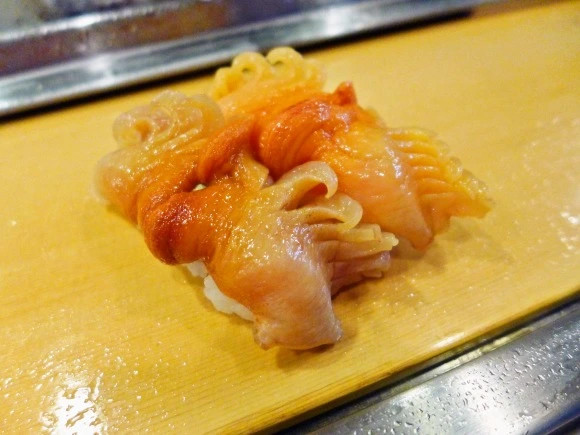
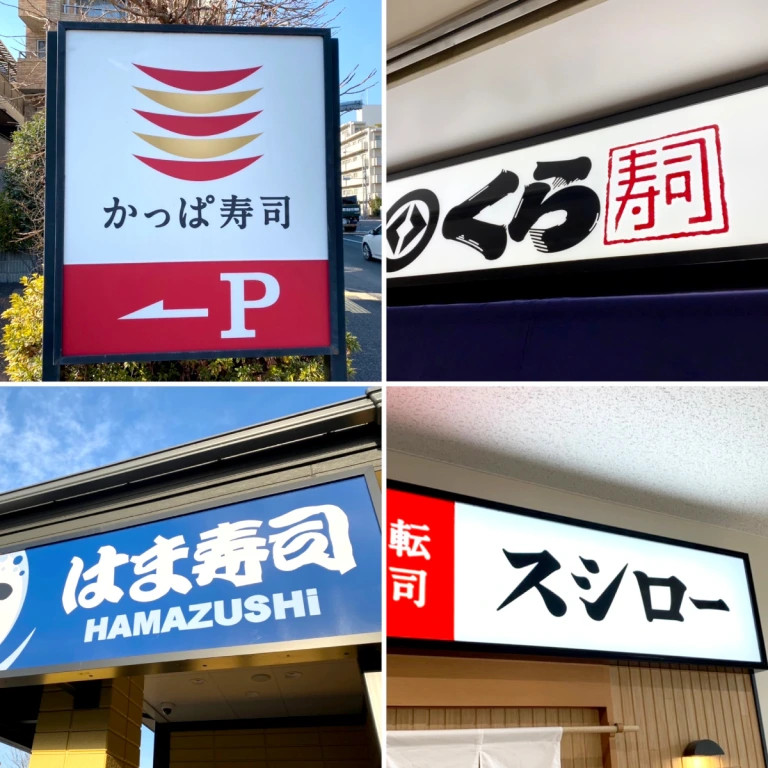
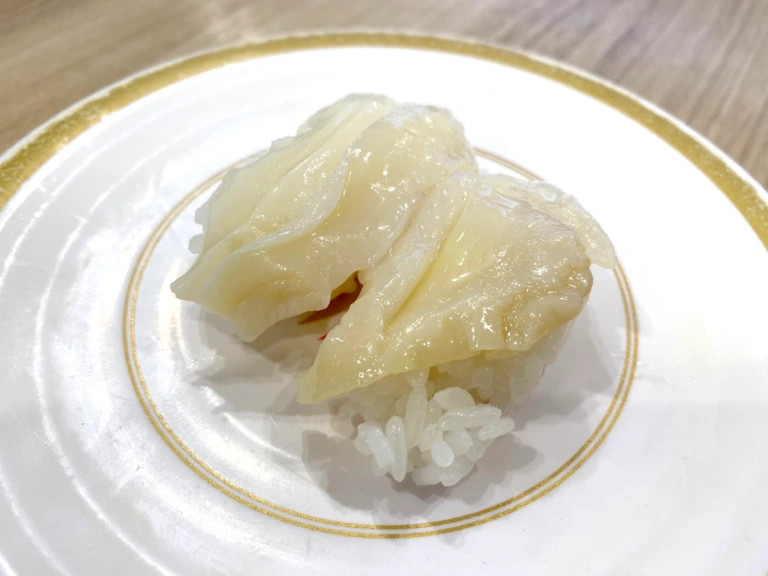
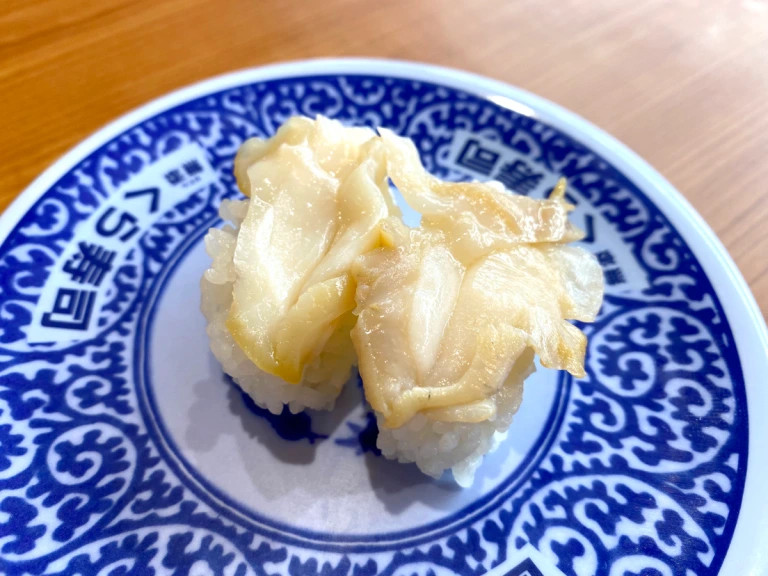
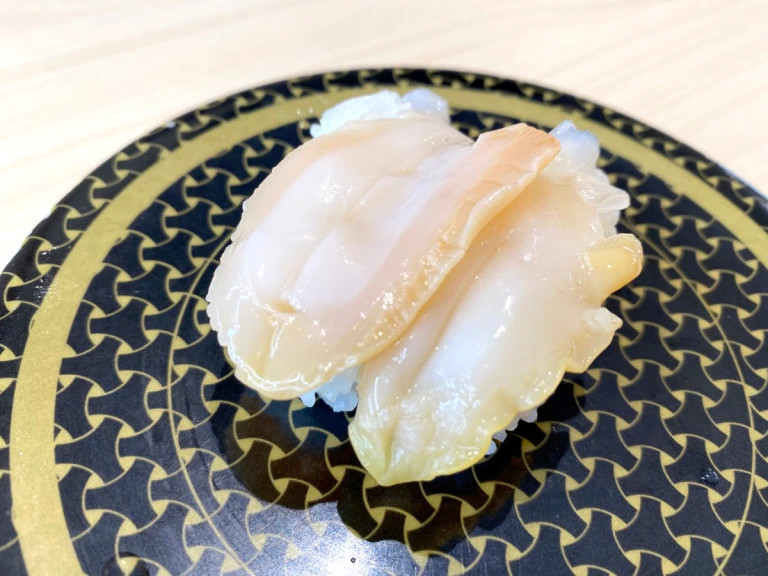
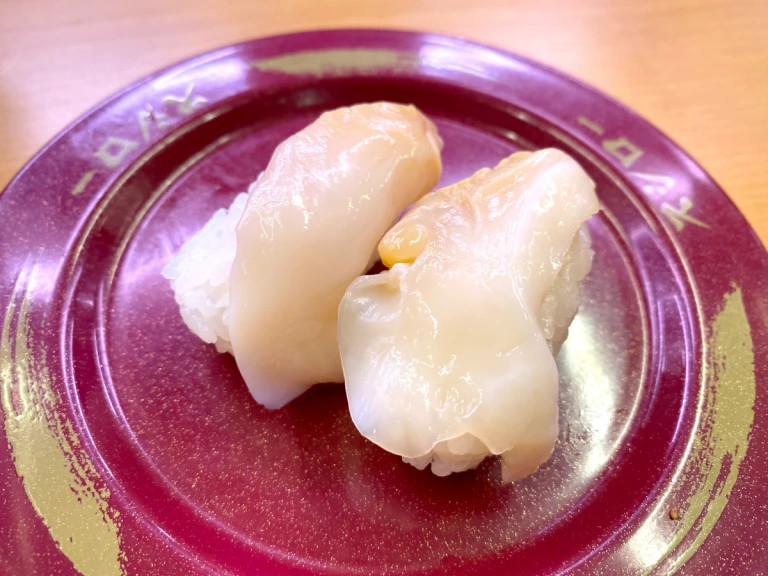
 Which Japanese conveyor belt sushi chain has the best aburi salmon sushi?【Taste test】
Which Japanese conveyor belt sushi chain has the best aburi salmon sushi?【Taste test】 Which Japanese conveyor belt sushi chain has the best prawn sushi?【Taste test】
Which Japanese conveyor belt sushi chain has the best prawn sushi?【Taste test】 Which Japanese conveyor belt sushi chain has the best salmon sushi?【Taste test】
Which Japanese conveyor belt sushi chain has the best salmon sushi?【Taste test】 Which Japanese conveyor belt sushi chain has the best bintoro sushi?【Taste test】
Which Japanese conveyor belt sushi chain has the best bintoro sushi?【Taste test】 Which Japanese conveyor belt sushi chain has the best tuna sushi?【Taste test】
Which Japanese conveyor belt sushi chain has the best tuna sushi?【Taste test】 Foreigner’s request for help in Tokyo makes us sad for the state of society
Foreigner’s request for help in Tokyo makes us sad for the state of society Japanese city loses residents’ personal data, which was on paper being transported on a windy day
Japanese city loses residents’ personal data, which was on paper being transported on a windy day Harajuku Station’s beautiful old wooden building is set to return, with a new complex around it
Harajuku Station’s beautiful old wooden building is set to return, with a new complex around it Akihabara pop-up shop sells goods made by Japanese prison inmates
Akihabara pop-up shop sells goods made by Japanese prison inmates Japanese ramen restaurants under pressure from new yen banknotes
Japanese ramen restaurants under pressure from new yen banknotes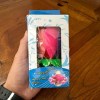 Celebrate another year of life by putting it in jeopardy with this birthday candle flower
Celebrate another year of life by putting it in jeopardy with this birthday candle flower Sandwiches fit for a sumo served up in Osaka【Taste Test】
Sandwiches fit for a sumo served up in Osaka【Taste Test】 Doraemon found buried at sea as scene from 1993 anime becomes real life【Photos】
Doraemon found buried at sea as scene from 1993 anime becomes real life【Photos】 Ghibli Park now selling “Grilled Frogs” from food cart in Valley of Witches
Ghibli Park now selling “Grilled Frogs” from food cart in Valley of Witches Red light district sushi restaurant in Tokyo shows us just how wrong we were about it
Red light district sushi restaurant in Tokyo shows us just how wrong we were about it McDonald’s new Happy Meals offer up cute and practical Sanrio lifestyle goods
McDonald’s new Happy Meals offer up cute and practical Sanrio lifestyle goods All-you-can-drink Starbucks and amazing views part of Tokyo’s new 170 meter-high sky lounge
All-you-can-drink Starbucks and amazing views part of Tokyo’s new 170 meter-high sky lounge French Fries Bread in Tokyo’s Shibuya becomes a hit on social media
French Fries Bread in Tokyo’s Shibuya becomes a hit on social media Studio Ghibli releases new action figures featuring Nausicaä of the Valley of the Wind characters
Studio Ghibli releases new action figures featuring Nausicaä of the Valley of the Wind characters New private rooms on Tokaido Shinkansen change the way we travel from Tokyo to Kyoto
New private rooms on Tokaido Shinkansen change the way we travel from Tokyo to Kyoto Studio Ghibli glasses cases let anime characters keep an eye on your spectacles
Studio Ghibli glasses cases let anime characters keep an eye on your spectacles Tokyo Tsukiji fish market site to be redeveloped with 50,000-seat stadium, hotel, shopping center
Tokyo Tsukiji fish market site to be redeveloped with 50,000-seat stadium, hotel, shopping center Beautiful Ghibli sealing wax kits let you create accessories and elegant letter decorations【Pics】
Beautiful Ghibli sealing wax kits let you create accessories and elegant letter decorations【Pics】 Studio Ghibli releases Kiki’s Delivery Service chocolate cake pouches in Japan
Studio Ghibli releases Kiki’s Delivery Service chocolate cake pouches in Japan New definition of “Japanese whiskey” goes into effect to prevent fakes from fooling overseas buyers
New definition of “Japanese whiskey” goes into effect to prevent fakes from fooling overseas buyers Our Japanese reporter visits Costco in the U.S., finds super American and very Japanese things
Our Japanese reporter visits Costco in the U.S., finds super American and very Japanese things Studio Ghibli unveils Mother’s Day gift set that captures the love in My Neighbour Totoro
Studio Ghibli unveils Mother’s Day gift set that captures the love in My Neighbour Totoro New Japanese KitKat flavour stars Sanrio characters, including Hello Kitty
New Japanese KitKat flavour stars Sanrio characters, including Hello Kitty More foreign tourists than ever before in history visited Japan last month
More foreign tourists than ever before in history visited Japan last month New Pokémon cakes let you eat your way through Pikachu and all the Eevee evolutions
New Pokémon cakes let you eat your way through Pikachu and all the Eevee evolutions Sales of Japan’s most convenient train ticket/shopping payment cards suspended indefinitely
Sales of Japan’s most convenient train ticket/shopping payment cards suspended indefinitely Sold-out Studio Ghibli desktop humidifiers are back so Totoro can help you through the dry season
Sold-out Studio Ghibli desktop humidifiers are back so Totoro can help you through the dry season Japanese government to make first change to romanization spelling rules since the 1950s
Japanese government to make first change to romanization spelling rules since the 1950s Ghibli founders Toshio Suzuki and Hayao Miyazaki contribute to Japanese whisky Totoro label design
Ghibli founders Toshio Suzuki and Hayao Miyazaki contribute to Japanese whisky Totoro label design Tokyo’s most famous Starbucks is closed
Tokyo’s most famous Starbucks is closed One Piece characters’ nationalities revealed, but fans have mixed opinions
One Piece characters’ nationalities revealed, but fans have mixed opinions We asked a Uniqlo employee what four things we should buy and their suggestions didn’t disappoint
We asked a Uniqlo employee what four things we should buy and their suggestions didn’t disappoint Princesses, fruits, and blacksmiths: Study reveals the 30 most unusual family names in Japan
Princesses, fruits, and blacksmiths: Study reveals the 30 most unusual family names in Japan Which Japanese conveyor belt sushi chain has the best scallop sushi?【Taste test】
Which Japanese conveyor belt sushi chain has the best scallop sushi?【Taste test】 Which Japanese conveyor belt sushi chain has the best iwashi sardine sushi?【Taste test】
Which Japanese conveyor belt sushi chain has the best iwashi sardine sushi?【Taste test】 Which Japanese conveyor belt sushi chain has the best negitoro sushi?【Taste test】
Which Japanese conveyor belt sushi chain has the best negitoro sushi?【Taste test】 Which Japanese conveyor belt sushi chain has the best salad sushi?【Taste test】
Which Japanese conveyor belt sushi chain has the best salad sushi?【Taste test】 Which Japanese conveyer belt sushi chain has the best steamed egg custard? 【Taste test】
Which Japanese conveyer belt sushi chain has the best steamed egg custard? 【Taste test】 Which Japanese conveyor belt sushi chain has the best mackerel sushi?【Taste test】
Which Japanese conveyor belt sushi chain has the best mackerel sushi?【Taste test】 Which Japanese conveyor belt sushi chain has the best egg sushi?【Taste test】
Which Japanese conveyor belt sushi chain has the best egg sushi?【Taste test】 Which Japanese conveyor belt sushi chain has the best saltwater eel sushi?【Taste test】
Which Japanese conveyor belt sushi chain has the best saltwater eel sushi?【Taste test】 Which Japanese conveyor belt sushi chain has the best yellowtail sushi?【Taste test】
Which Japanese conveyor belt sushi chain has the best yellowtail sushi?【Taste test】 Which Japanese conveyor belt sushi chain has the best hamburger steak sushi?【Taste test】
Which Japanese conveyor belt sushi chain has the best hamburger steak sushi?【Taste test】 Which Japanese conveyor belt sushi chain has the best Prawn Tempura Sushi?【Taste test】
Which Japanese conveyor belt sushi chain has the best Prawn Tempura Sushi?【Taste test】 Which Japanese conveyor belt sushi chain has the best squid sushi?【Taste test】
Which Japanese conveyor belt sushi chain has the best squid sushi?【Taste test】 Which Japanese conveyor belt sushi chain has the best aosa miso soup?【Taste test】
Which Japanese conveyor belt sushi chain has the best aosa miso soup?【Taste test】 How to have a great meal at conveyer belt sushi chain Kura Sushi even if you hate raw fish
How to have a great meal at conveyer belt sushi chain Kura Sushi even if you hate raw fish Mr. Sato tries out Kappa Sushi’s salmon salad mountain, a fun dish available for only one week
Mr. Sato tries out Kappa Sushi’s salmon salad mountain, a fun dish available for only one week Kappa Sushi rents out conveyor belt for diners to use at home
Kappa Sushi rents out conveyor belt for diners to use at home We try a rotating sushi chain’s super high-quality 3-layer caviar, sea urchin & fatty tuna sushi
We try a rotating sushi chain’s super high-quality 3-layer caviar, sea urchin & fatty tuna sushi
Leave a Reply